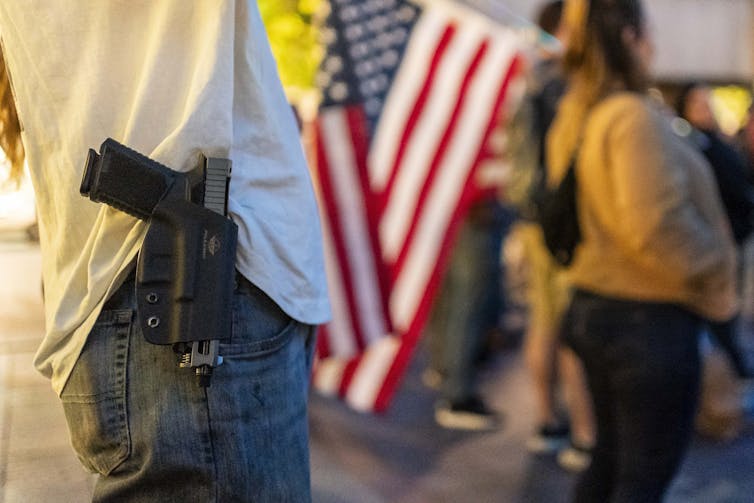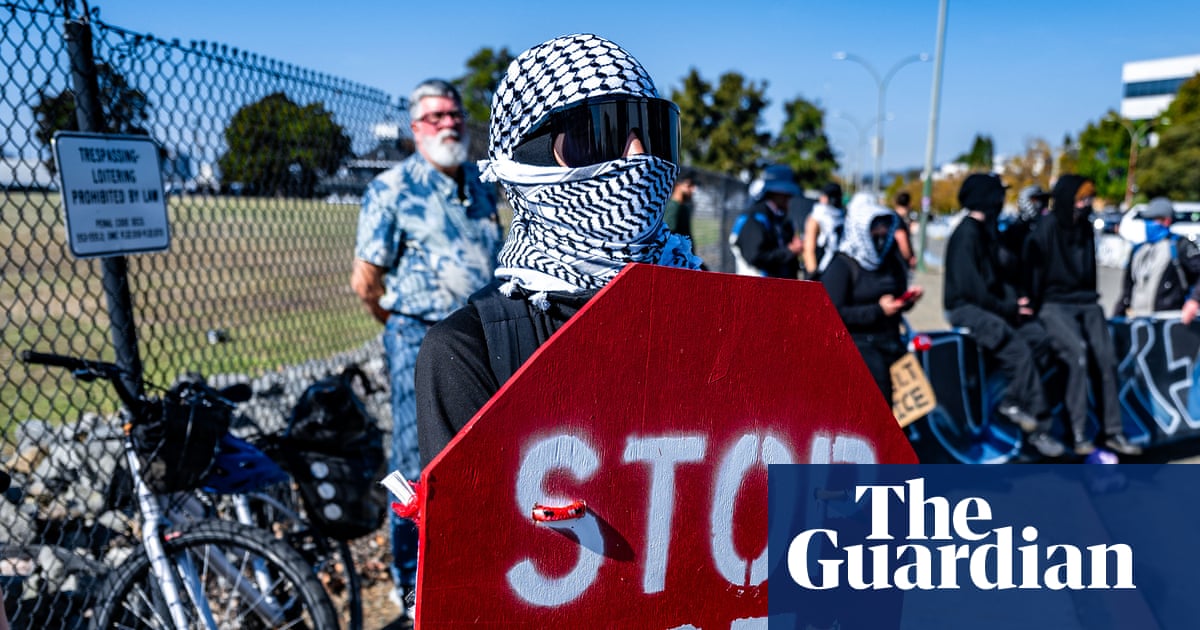The assassination in September 2025 of conservative activist Charlie Kirk has heightened attention on the relationship between political rhetoric and political violence.
Even before police had identified a suspect, President Donald Trump blamed the shooting on the “rhetoric” of the “radical left.” The Trump administration has since acted to silence left-leaning speakers and is threatening to intensify its attacks on left-wing political speech.
But my decades of studying free speech law have convinced me that suppressing political rhetoric, even through social norms rather than law, undermines the discussion, debate and constructive disagreement essential for a healthy democracy.
Gun proliferation complicates the problem by making political violence much easier to carry out.
Rise of political violence
Political violence – by which I mean any physical attack on people that aims to achieve a political goal – harms democracy by shifting the field of political disagreement from debate to aggression.
Under the U.S. constitutional system of limited government and individual rights, political violence by the government – for example, government assaults on anti-government protesters – is among the gravest threats to liberty.
But political violence committed by private individuals or groups also corrodes constitutional democracy. In the United States, acts of private political violence against members of government and against ordinary people have both increased dramatically in recent years.
Political assassinations are the most vivid form of political violence. The Kirk assassination is only the latest example.

In June 2025, a shooter with a “hit list” of left-liberal targets assassinated Minnesota Democratic Rep. Melissa Hortman and her husband. In December 2024, a shooter angry about health insurance costs killed United Healthcare CEO Brian Thompson. In July 2024, a shooter wounded Trump at a campaign rally in a failed assassination attempt.
Political violence also includes bias-motivated murders. In 2022, a white supremacist murdered 10 Black patrons at a grocery store in Buffalo, N.Y. In 2019, an anti-immigrant racist murdered 23 mostly Latino shoppers at a Wal-Mart in El Paso, Texas. In 2018, an antisemite murdered 11 congregants at a Pittsburgh synagogue.
In those incidents and numerous others, extreme political ideas appear to have motivated the attackers. The linkage of extremist speech to lethal violence has prompted calls to legally restrict or punish extremist speech.
Political violence, free speech and cultural editing
The First Amendment, however, protects extremist speech, including advocacy of violence. Violent rhetoric must actually incite or threaten violence to lose the First Amendment’s shelter.
If law cannot curb the sorts of speech that may inspire political violence, what about social norms – widely shared beliefs about what speech is socially acceptable or appropriate?
Much speech that the First Amendment protects from government regulation eventually disappears from public discourse. That happens through a process I call “cultural editing”: popular and institutional rejection of outmoded or repellent ideas. For example, no serious medical conference discusses treating hay fever with cocaine, and no respectable political science panel includes Nazis.
The Trump administration’s blaming of the Kirk assassination on “radical left” rhetoric points toward a deeper level of cultural editing.
Trump and other conservatives have not cited speech that advocated violence against Kirk. Instead, some conservative activists, spurred on by Trump administration officials, called for harassing and punishing critics of Kirk’s statements and actions.
But such criticisms of Kirk, whatever their merits or lack thereof, fall within the scope of ordinary political debate.
Kirk was not a government official, but he had strong influence in the Trump administration. Robust democratic discourse requires space for people to criticize such powerful figures. Large-scale cultural editing of those criticisms, amounting to suppression of left-leaning views, would hurt the public’s ability to discuss and resolve political disagreements.
However, Trump and others who push for suppressing harsh political rhetoric might argue that the stakes of verbal attacks have increased. They might say that U.S. political culture can no longer indulge political invective because political violence has become more common.
Political violence and guns
That argument for suppressing harsh political speech ignores an independent cause of political violence: gun proliferation.
Most political violence in the U.S. involves guns. Guns make political violence easier by erasing the distance between extremist ideas and lethal action. Hate or fanaticism can end a life in an instant, hundreds of yards from the victim.
The U.S. has by far the highest number of civilian guns and rate of civilian gun ownership in the world. Since 2008, when the Supreme Court declared an individual Second Amendment right to keep and bear arms, annual U.S. gun purchases have increased from about 9 million to about 16 million.
Governments often find regulating speech easier, even though less effective, than tackling underlying problems. At times, federal and state governments have addressed political violence by regulating guns. The 1994 federal assault weapons ban exemplifies regulatory efforts to curb overall gun violence.
But the Supreme Court’s Second Amendment cases now appear to bar strong gun regulations.
People in a democratic society need freedom to make harsh, even extreme political statements with a minimum of cultural editing. The Second Amendment protects access to lethal weapons. This combination of free speech and gun rights makes the growing problem of political violence much harder to solve.

 German (DE)
German (DE)  English (US)
English (US)  Spanish (ES)
Spanish (ES)  French (FR)
French (FR)  Hindi (IN)
Hindi (IN)  Italian (IT)
Italian (IT)  Russian (RU)
Russian (RU)  2 weeks ago
2 weeks ago
























Comments